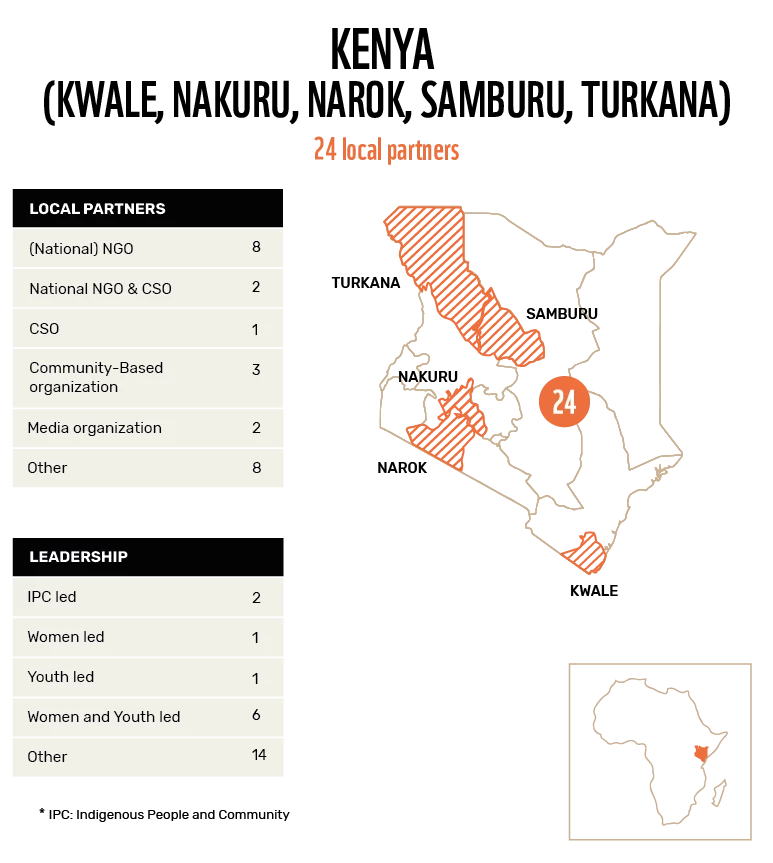Kenya
Climate change induced natural calamities are stressors affecting the marginalized groups in Kenya.
Climate change in Kenya is complex and variable
Kenya boasts a remarkable biodiversity. The coastal forests of Kwale county house over half of the country's rare plant species and support a diverse array of marine life, with more than 11,000 species thriving in its waters. Nakuru county, on the other hand, is distinguished by the presence of Lake Naivasha basin, a freshwater lake and designated as a wetland of international importance.
These ecosystems serve as vital sources of economic livelihood, including agriculture, fisheries, livestock, tourism, and mining. Kenya is facing a complex and variable climate change situation, as indicated by its rank of 151 out of 181 on the global vulnerability list. The country is witnessing an increase in both flooding and droughts.
Read more about the landscape (PDF).
What is the situation?
Climate change-induced natural disasters like flooding, droughts, and rising sea levels act as significant stressors for marginalized communities in Kenya. Recurrent droughts significantly affect agricultural production, including crop farming and livestock keeping. Among rural populations, smallholder farmers who rely on rain-fed farming are expected to be the most affected.
However, those with access to irrigation systems can mitigate the effects of dry periods to some extent, depending on the availability of water sources for irrigation. Coastal communities, such as those in Kwale, are particularly vulnerable to rising sea levels, which directly threaten their livelihoods. This situation also increases the potential for the emergence and spread of water-borne diseases, further exacerbating the challenges faced by these communities.
How can VCA support local partners?
The Voices for Just Climate Action (VCA) network has been actively involved in supporting the formulation of county-level climate change policies while ensuring meaningful participation of local communities. It’s important to tailor policies to specific local climatic conditions rather than adopting a generalized approach. This approach stems from the observation of changing climatic patterns and the need to engage stakeholders more effectively in policy-making processes at the county level.
Especially Kenyan youth have demonstrated their proactive engagement in addressing climate issues, and VCA has played a pivotal role in providing platforms for youth voices at national and global events. They have also facilitated capacity development initiatives specifically targeting youth.
The VCA network consists of a diversity of local organizations in Kenya.

